Deer are graceful, nearly ethereal creatures. Their silent forest ways and magnificent appearance may inspire paintings and poetry, novels and songs. But for the hard-working gardener, they may more likely inspire enraged streams of cursing, because deer are also opportunistic jerks who readily translate the hard work invested in a garden into a free, all-night buffet.
They can hardly be blamed, of course. They’re just trying to fill their bellies, and the succulent, new growth of a lush flower bed can be too much to resist. So, for those of us who share the land with deer, spring and summer plantings require some creativity to outsmart the four-footed.
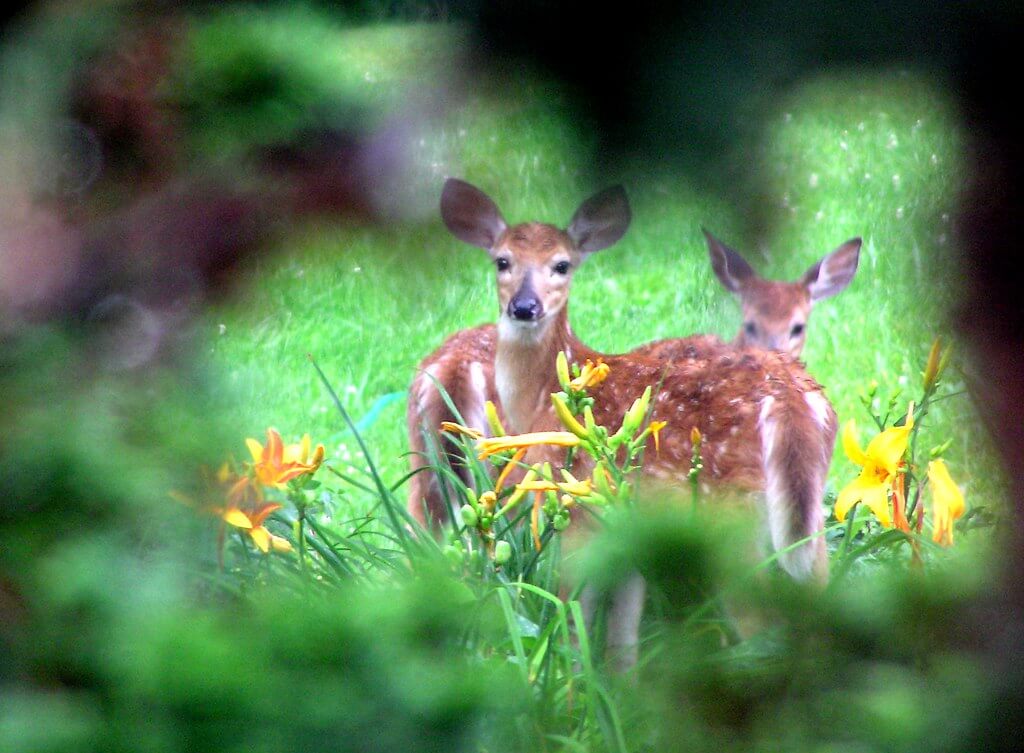
Is it possible to completely deer-proof your garden? Probably not, unless you turn it into a rather unsightly, ungulate-proof bunker with 10-foot high walls (deer can jump over 8 feet above the ground). Rather than investing tons of time and money in the anti-deer offense, why not learn what deer like to eat and then plant the plants they dislike?
Related Post: 6 Deer Repellents You Have to Try
Here’s the secret: deer really don’t like plants that are poisonous to them, pungent/strong-smelling, or prickly and hairy. Thankfully for us gardeners, the long list of plants that fit this deer-resistant bill are diverse and absolutely gorgeous.
All the plants listed in this article are classified, according to Rutger’s University, as being some of the most resistant to deer–usually undisturbed by their browsing habits. Of course, this does not mean that they are 100% deer-proof. Those plants just don’t exist! Deer’s tastes vary regionally–especially if there’s not a lot of wild areas for them to naturally browse and they’re hungry.
What works for one gardener may not work as well as the gardener a state over–and every once in a while, you just end up with a weird deer who breaks all the rules. Making your garden undesirable to deer will be a multi-year endeavor as you learn the habits of your local deer population–so enjoy the journey!
Related Post: 19 DIY Deer Stands to Enhance Your Vantage Point
The Best Deer-Resistant Plants
In the following list of 10 deer-resistant plants, I tried to list plants that are attractive, easy to grow, and most importantly, native or non-invasive. Peruse the following list for some anti-Bambi inspiration, and see if you come out on the winning side of this year’s battle of man-vs-ruminant.
1. Bee Balm
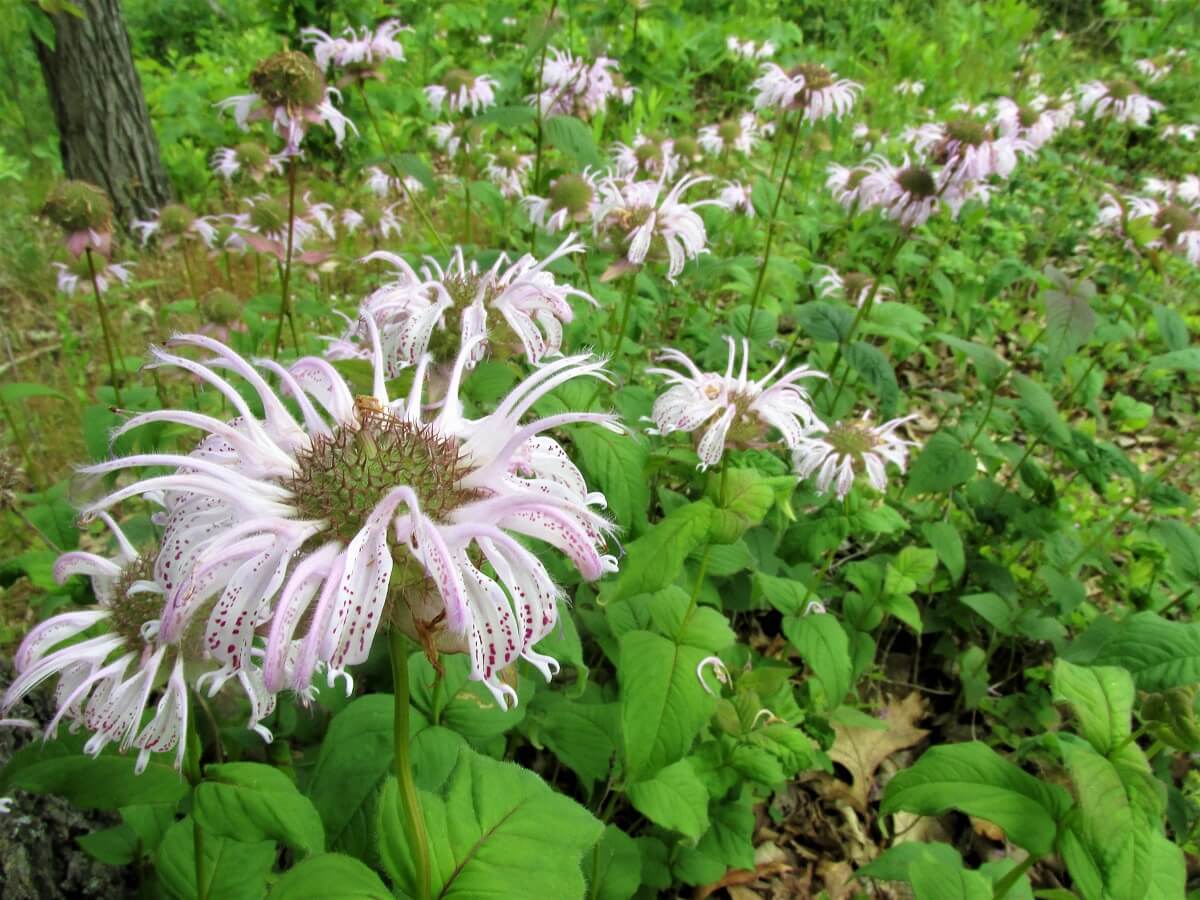
This term covers a large range of showy perennials. You may be able to tell that they’re part of the deer-despised mint family with their square stems and familiar, serrated leaves. My personal favorite is wild bergamot (Monarda bradburiana), a prairie and glade native to my Ozark home.
Related Post: Bee Balms or Bee Bums?
Not only are the blooms and leaves unique and wonderfully scented, they are also delicious in hot or iced tea! Plant these beauties in full sun and somewhat rich soil. They like it not too dry and not too wet, so plan accordingly. You can enjoy these splendid deer-resistant plants anywhere from zones 3 to 9.
2. Yucca
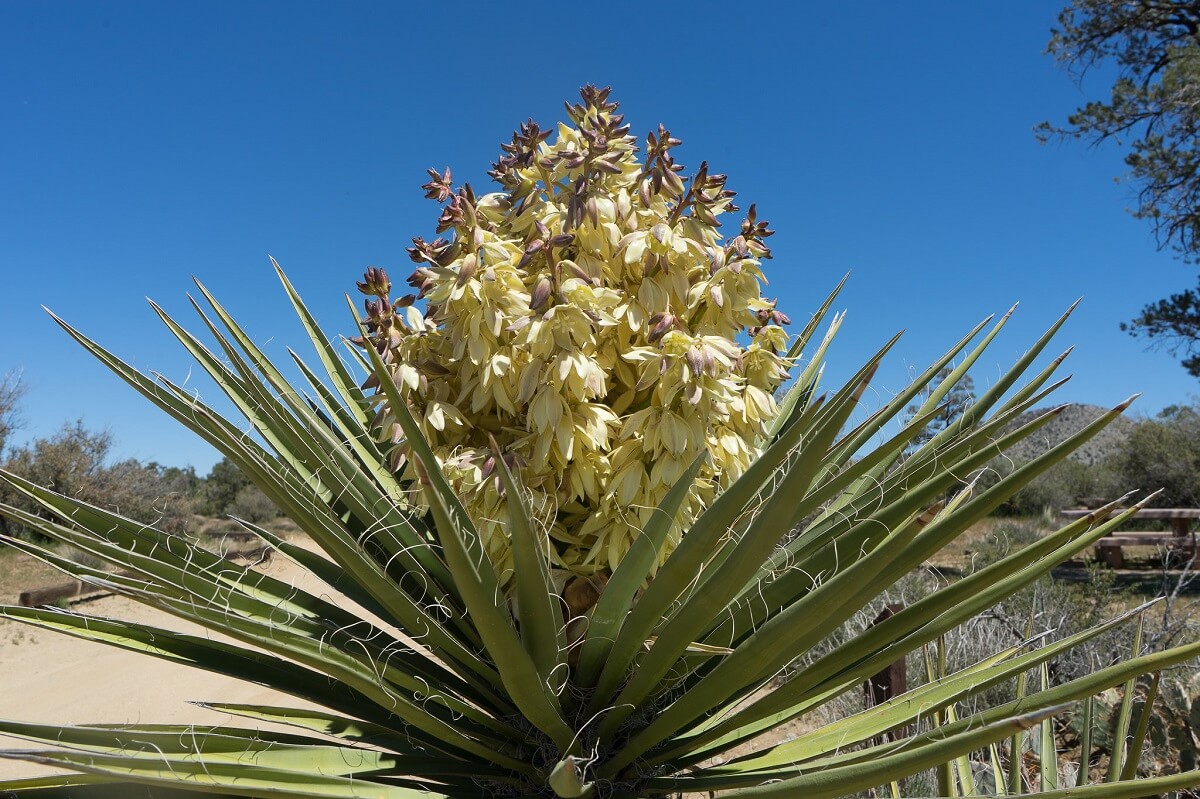
The spiky spears and fragrant white flowers of yucca may make a bold statement in your garden, but deer will leave them alone. And kids should too — those spear-like leaves can cut! These Southwest U.S. native deer-resistant plants thrive on neglect and do excellently in dry, even drought-like conditions.
Make sure that they are planted in full sun and very well-draining soil anywhere from zones 4 to 11. If you like the flowers but aren’t fond of varieties like the Adam’s needle (Yucca filamentosa), or the aptly-named Spanish bayonet (Y. aloifolia), try finding the softer-leaved Bear grass yucca (Y. smalliana).
3. Bush Honeysuckle
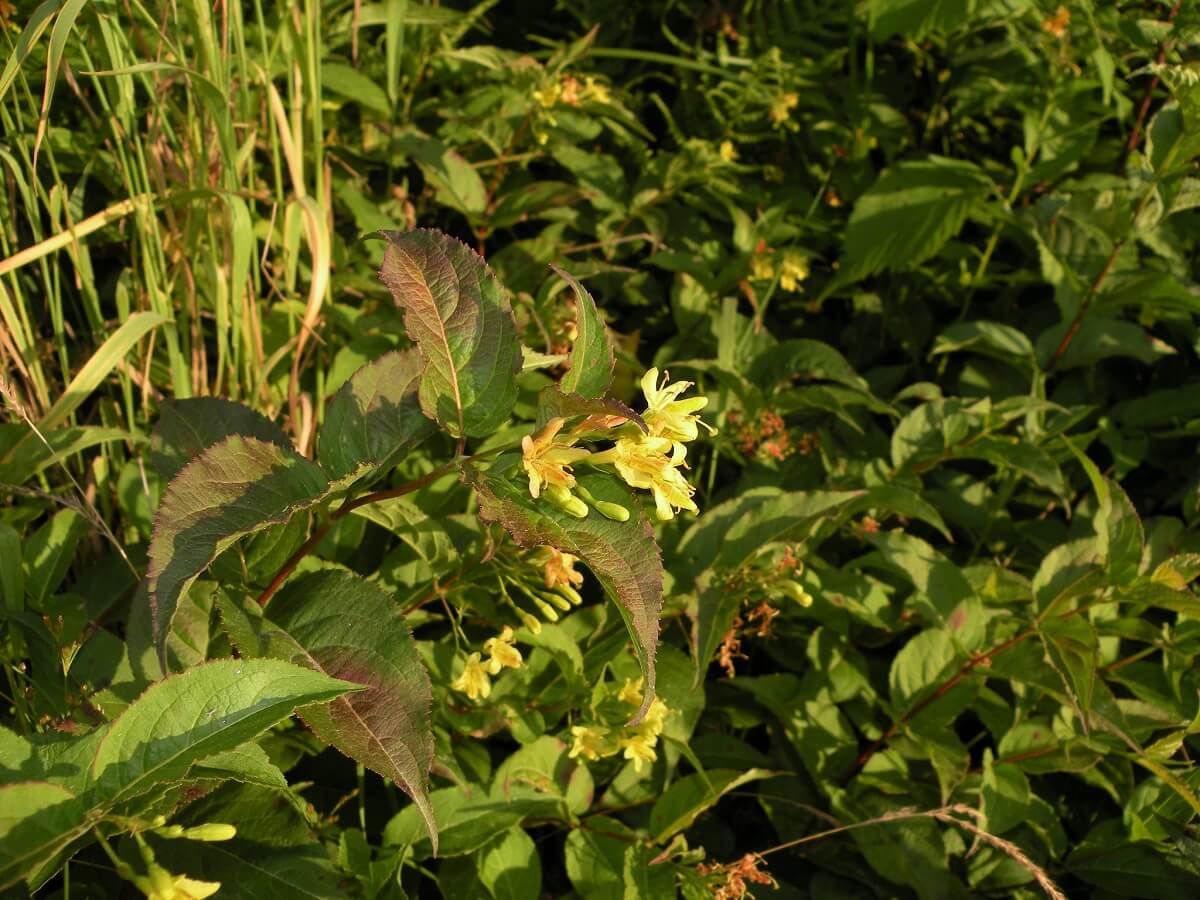
The North American native bush honeysuckle (Diervilla lonicera and D. sessilifolia) won’t invade the countryside like its infamous Asian relatives, so rest easy planting this attractive bush near any wild areas.
You’ll get multi-seasonal enjoyment from these shrubs with yellow flowers in the early summer and beautiful leaf colors in the fall. Give them a well-drained home in full sun or partial shade in zones 3 to 8 (may vary depending on the variety) and enjoy the show!
4. Wild Indigo
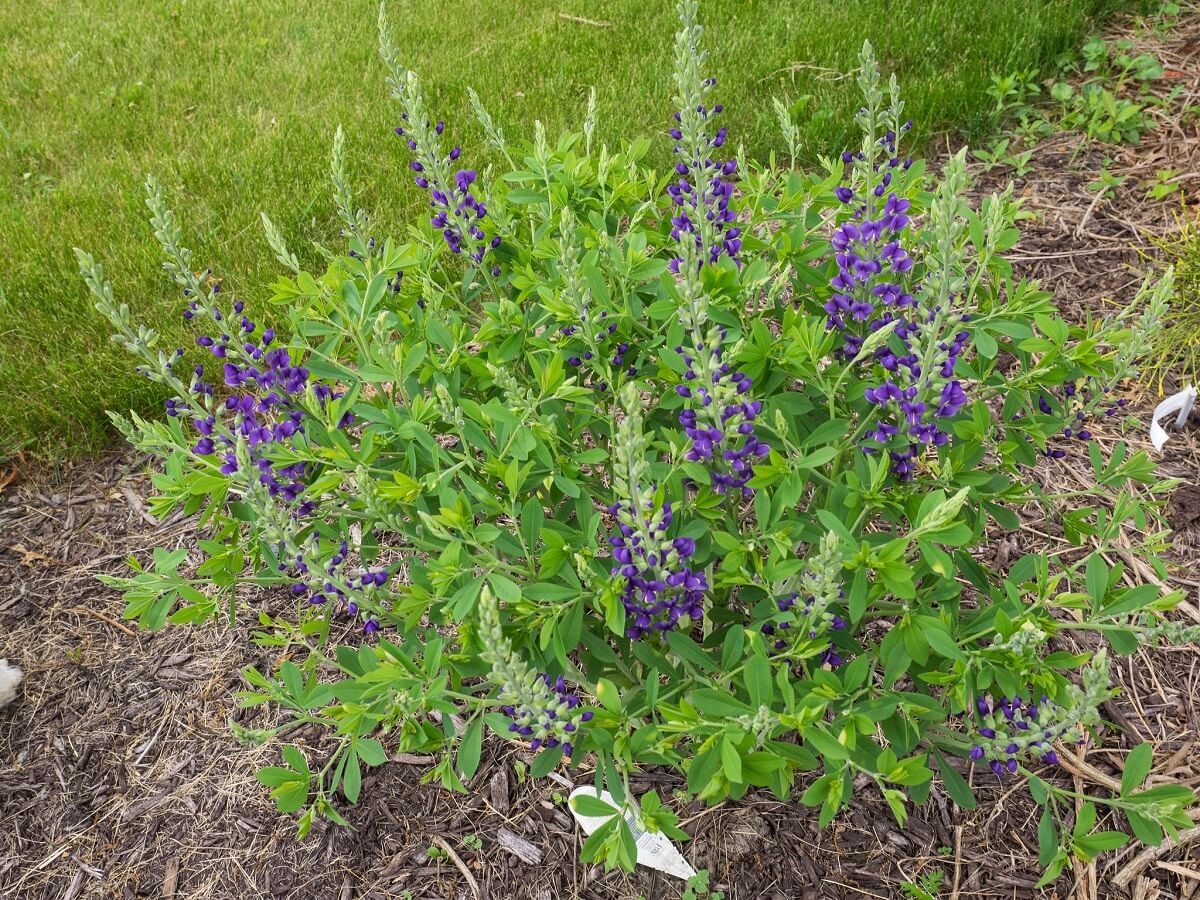
These native flowers make eye-catching, three-foot spears of long-lasting flowers in the early spring. True to their name, they were historically used as a source of blue dye. Perennial, low-maintenance, and poisonous to deer, they will be an interesting vertical focal point in a garden. All you need to decide is what color suits your plant palette best!
Related Post: How to Dye Fabric Naturally
Plant these deer-resistant plants in pretty much any soil in zones 5 to 8, but make sure that they get plenty of sun — at least six hour’s worth. I really like this cultivated yellow variety. It’s the closest to the creamy-hued ones that grow wild around my pond.
5. Snow Drops
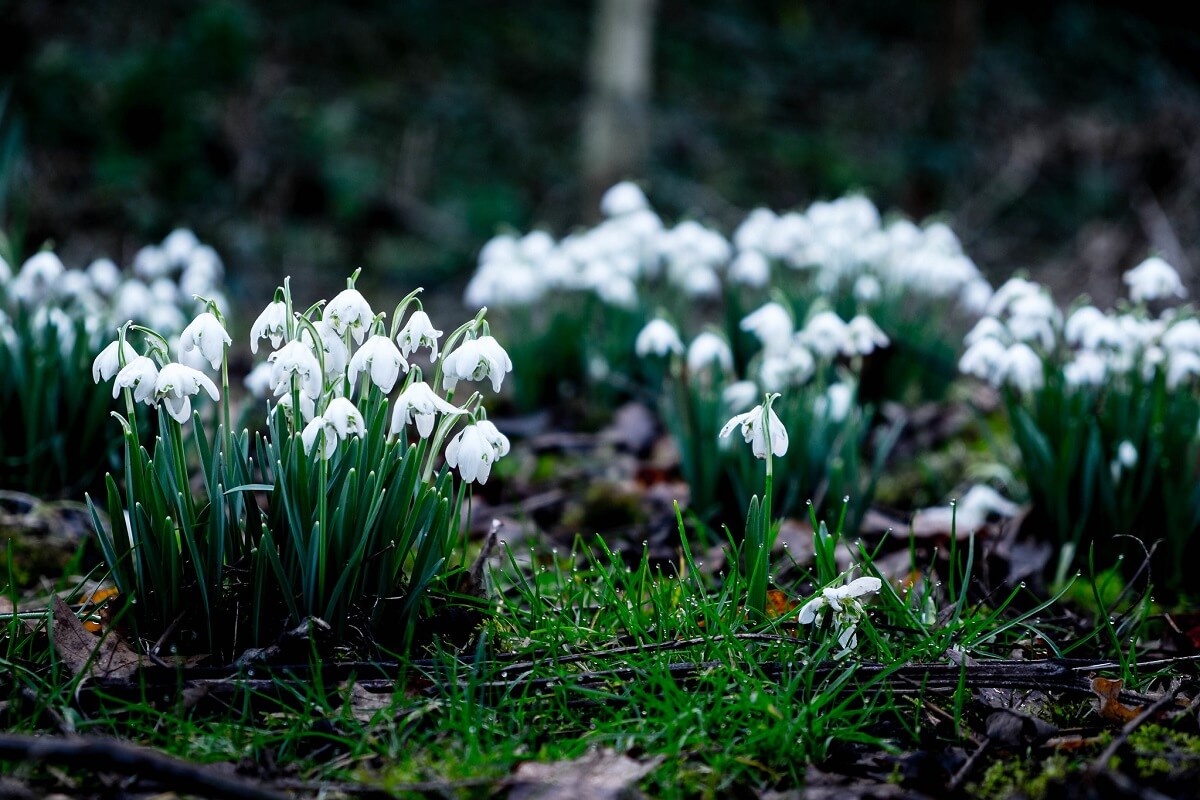
In the early spring, the first bit of green that emerges from the ground is like a beacon of hope, comforting your ice-worn eyes that yes, winter really is ending. The only thing that can dampen that hope is watching deer gobble up all those promising shoots!
Thankfully, this harbinger of warmer times is poisonous to deer, so they’ll sidestep its nodding white flowers for something tastier. Snowdrops (Galanthus elwesii) do best in full sun, but you won’t have to fight to find a good spot. It will start growing well before the trees leaf! Give it humus-rich soil in zones 4 to 9. Try this variety for the biggest and earliest blooms — often peeping out of the snow-covered ground.
6. Lamb’s Ear
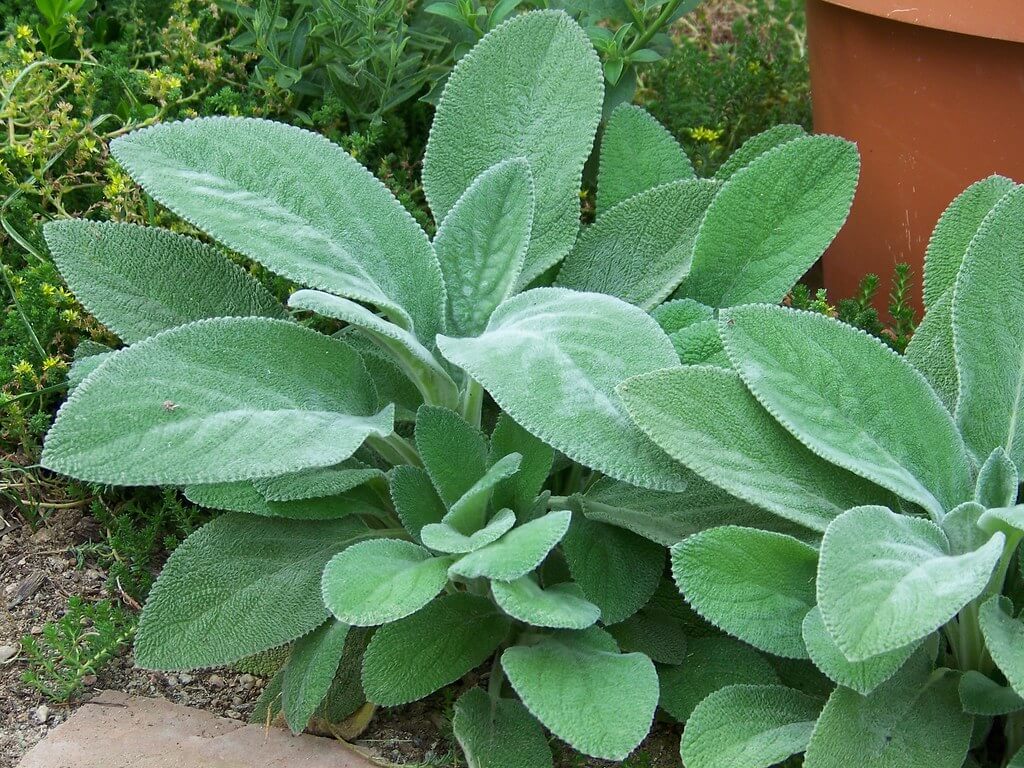
Another easy-going perennial, this unusually-textured, hairy plant is luxurious to the touch and positively disgusting to deer. Though it will spread vigorously if not divided and maintained every year, it is very easy to eradicate from areas where it is not wanted, so it is not dangerously invasive to native areas.
Pick a spot where its tall, lilac-hued spires of blossoms can grow freely, and you’ll be able to enjoy its adorably tactile presence for years to come. This middle-eastern perennial is tolerant of dry, sunny conditions — prefers them, actually — and will grow pretty much anywhere, without maintenance, in zones 4 to 8.
7. Fringed Bleeding Heart
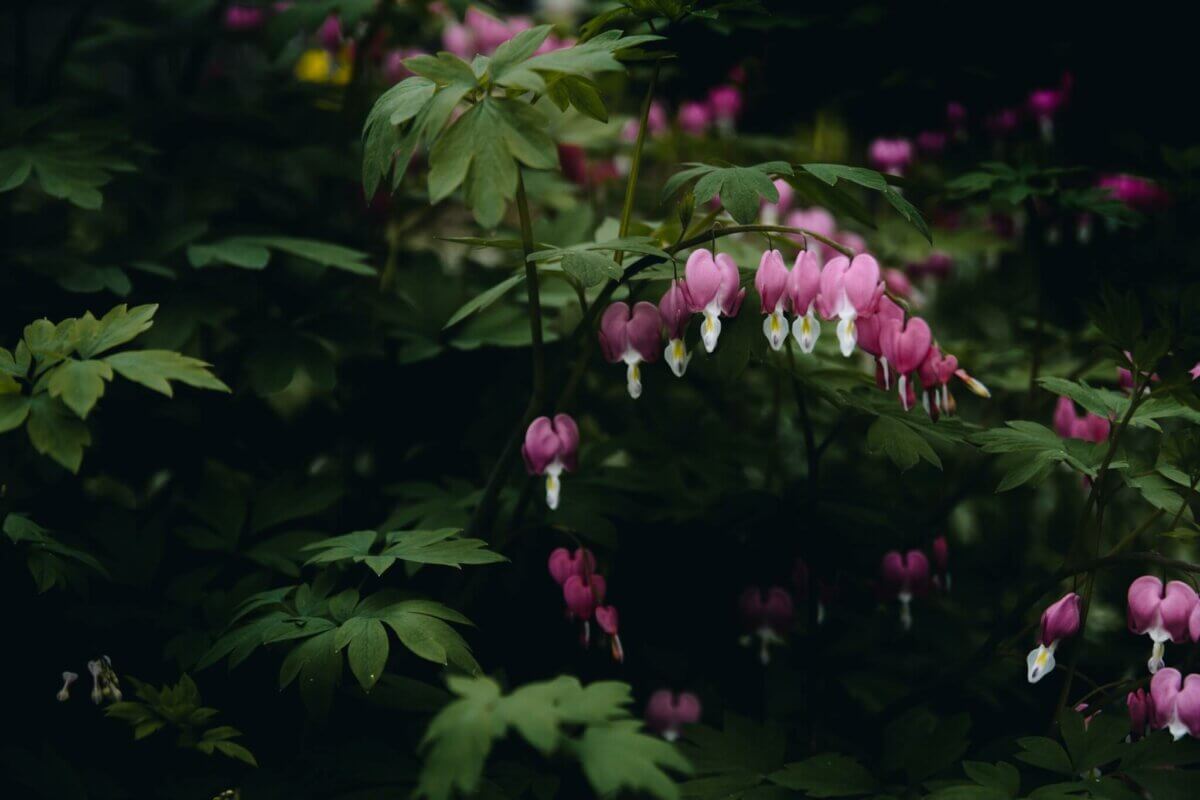
Native to Appalachia, this incredibly attractive plant boasts fern-like foliage and uniquely-shaped, pink or white flowers. Typically found in forest undergrowth, fringed bleeding heart (Dicentra eximia) does best if there’s a similar setup in your garden: full to partial shade and moist, fertile soil.
Zones 3 to 9 are the best place to grow these deer-resistant plants, and though they usually only bloom in the spring, they may surprise you with sporadic summer and fall blooms.
8. Cinquefoil
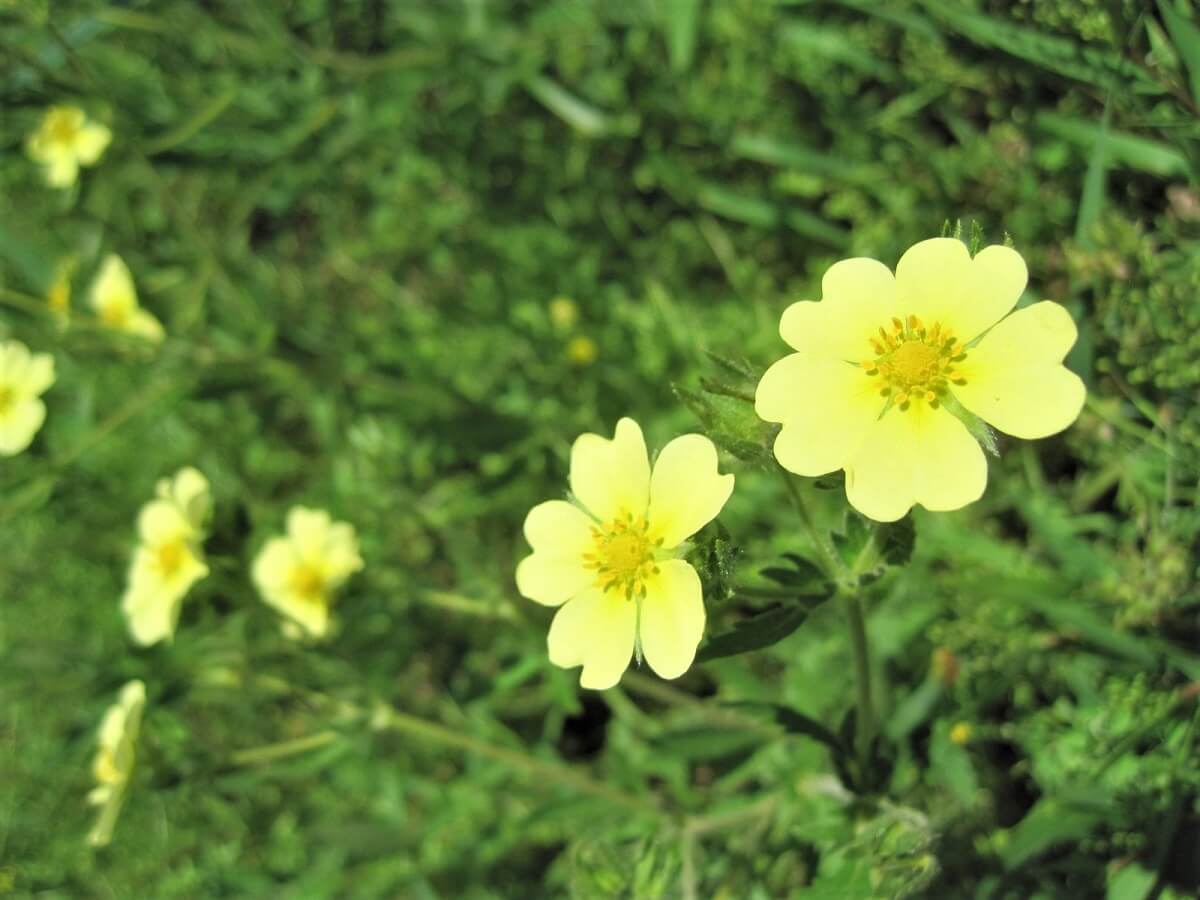
You may have the wild version of this beautiful garden flower already growing on your land. The white, pink, or yellow flowers on these deer-resistant plants have hairy stems and leaves, meaning their long-lasting blooms will be left to flower all season long with no nibbles to stunt their growth.
The domesticated strains (Potentilla fruticosa) form an attractive, low-growing shrub with buttercup-like flowers. Grow them in full or partial sun in zones 2 to 7. Though they do best in well-draining, rich soil, they can also grow in rocky or clay-heavy soils as well.
9. Coral Bells/Alum Root
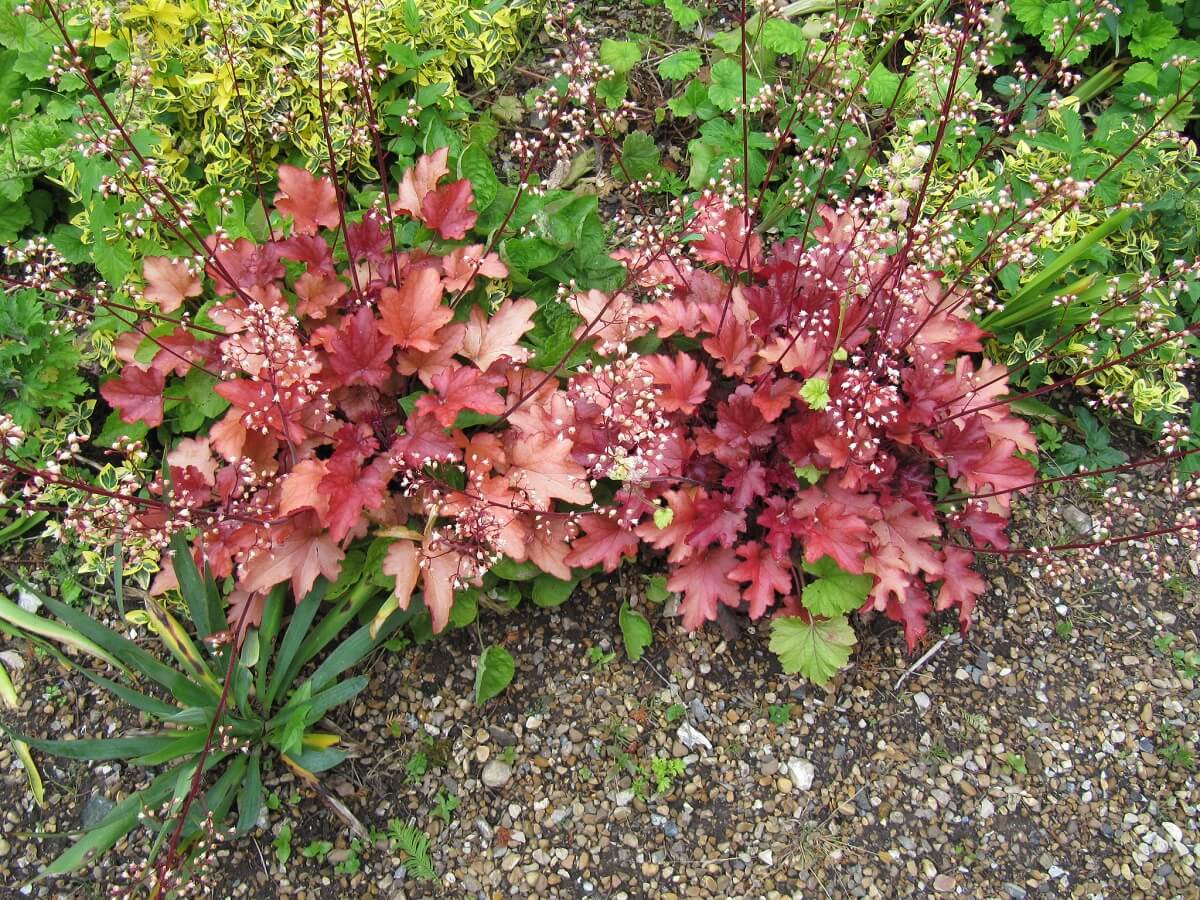
With large, silver-traced, maple-like leaves, this shade-loving perennial is a plant to prove that flowers aren’t everything! If you’re willing to value their beautiful foliage over their subtle inflorescence, you will find an amazing assortment of burgundy, lime-green, and even deep purple colors to add texture to your garden beds.
This native plant may grow wild in forested areas on your property, but the domesticated versions are also worth seeking out. Plant them in a rather dry, sandy soil anywhere in zones 4 to 9.
10. American Holly
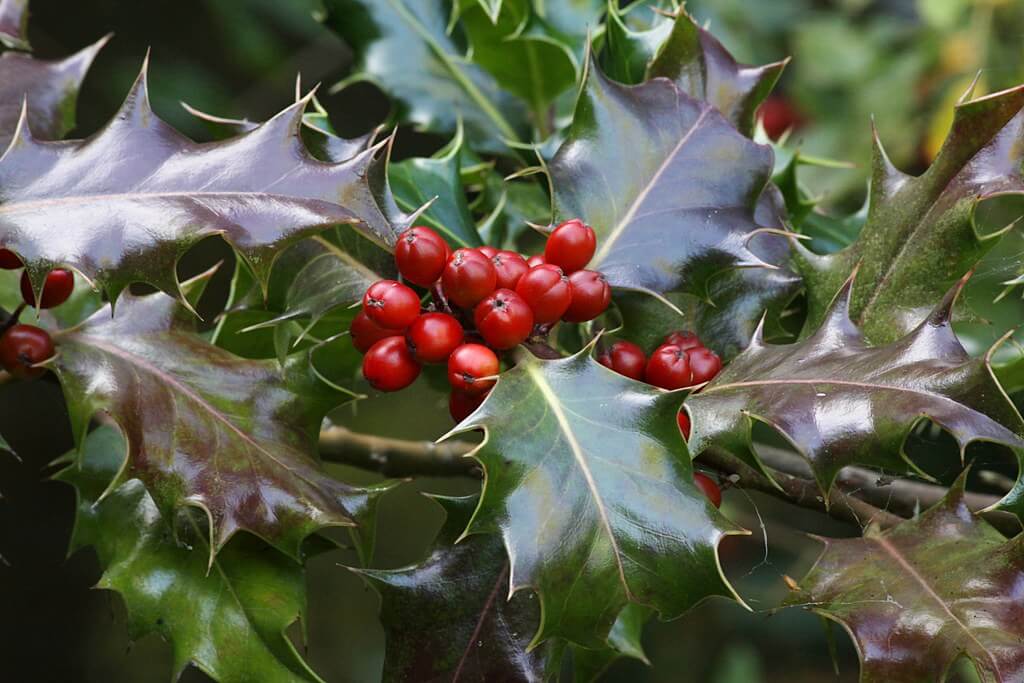
Deer appetites don’t limit themselves to merely flowers and garden beds — your trees are up for browsing as well. Thankfully, the evergreen, graceful form of the American holly (Ilex opaca) is too spiky for snacking. The non-native varieties are not nearly as deer-resistant, so be sure to look for native varieties.
Related Post: Homestead Stories: The Holly and the Ivy
Additionally, if you want those beautiful, bird-magnet red berries, be sure to plant a male near your fruit-bearing female tree. These trees are typically understory trees and can tolerate moderate shade, but they also thrive in full sunlight.
For a happy holly, well-draining, moist soil in zones 5 to 9 is ideal. Additionally, give them a bit of a sheltered spot — forest-originating holly trees can’t tolerate blasting winds.
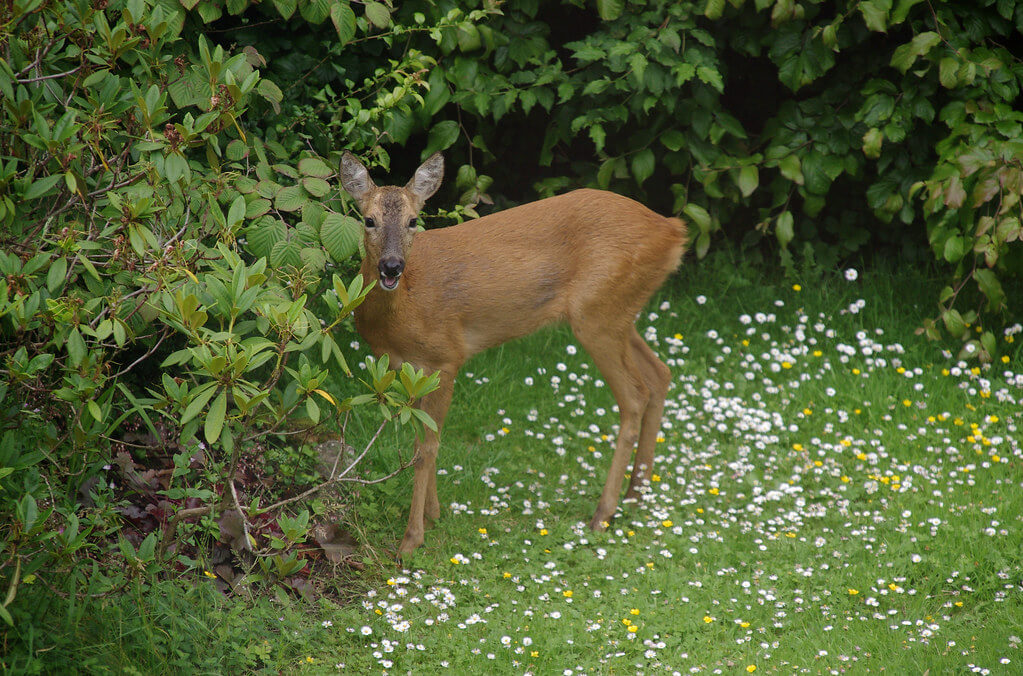
There are so many other plants beyond those in this list! If deer dinners have gotten you down this season, cheer yourself up with dreaming garden dreams and perusing this ginormous list of deer-resistant plants.
If you want to do some state-specific searches, this list will be an even better use of your time. And if you do end up playing unintentional host to some opportunistic ungulates, see if you can find a way to enjoy their peaceful presence in your backyard anyway. Deer moving through the early morning mist is really a special sight after all.



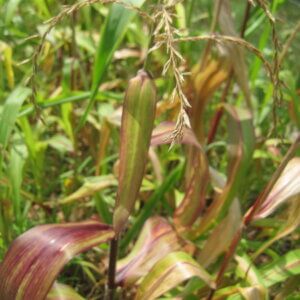

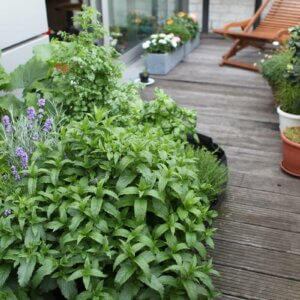
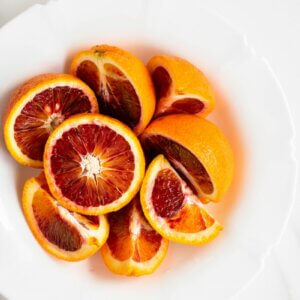
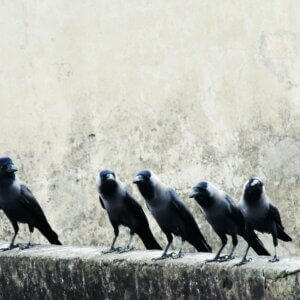



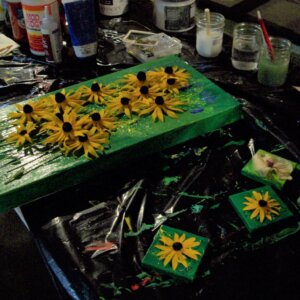

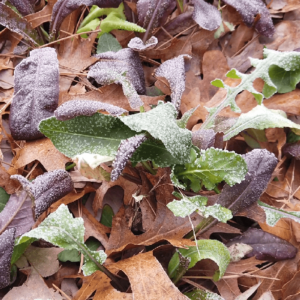
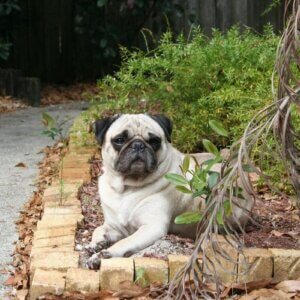
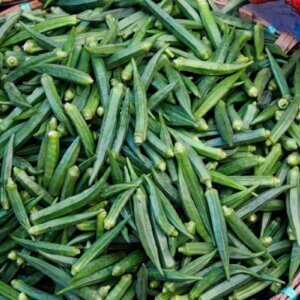
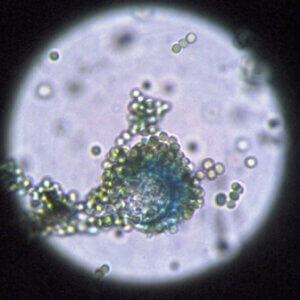
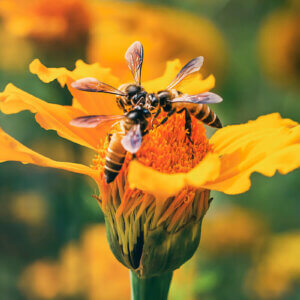

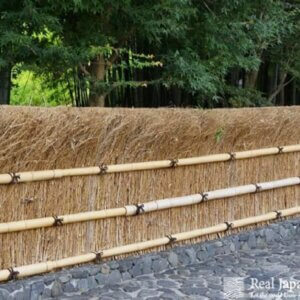




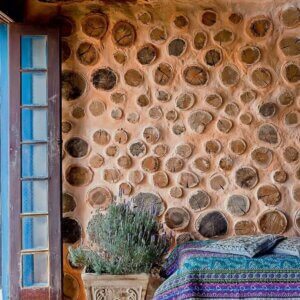

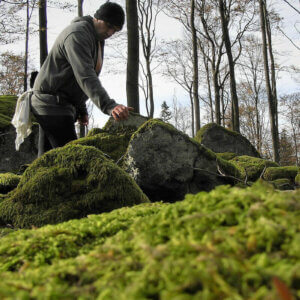

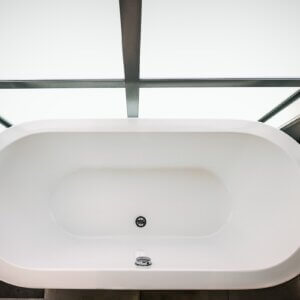
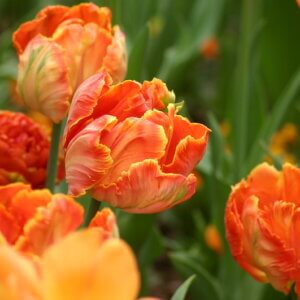
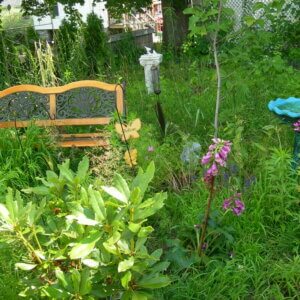

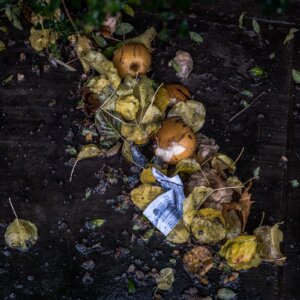
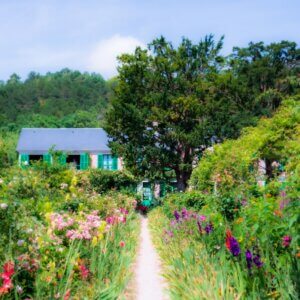
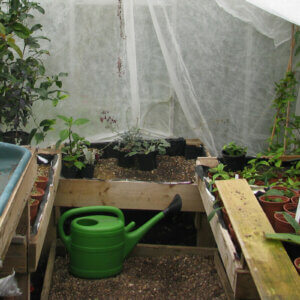

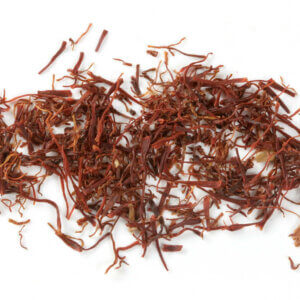
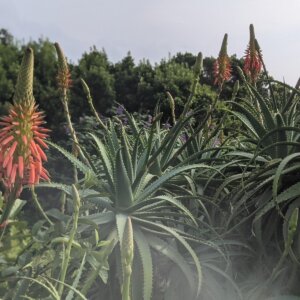
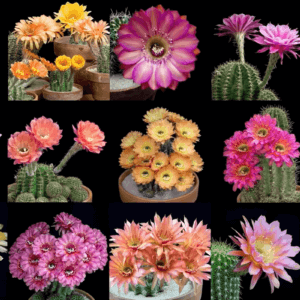
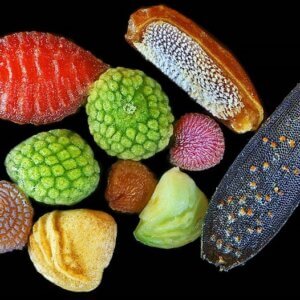
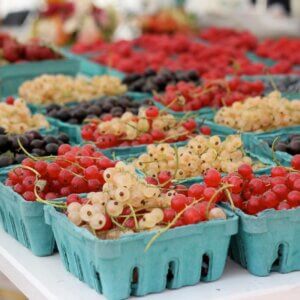

I was surprised to see American Holly on your list. The previous owners of our property had planted a hedge of holly around 1 1/2 edges of our vegetable garden. The deer have snacked on holly during the two years we have owned the property. This past winter they ate the holly down to the main branches and some of it did not survive. The deer do not touch the boxwood hedges.
Thanks for your comment, Cyndy! Deer really vary regionally, so sometimes you end up with a local resident deer who just doesn’t “follow the rules.”
In all truth, I wonder if the variety the previous owner planted was one of the hybrid varieties typically used for hedges, rather than 100% true American Holly. These low-growing hybrids are crossed with non-native species which deer DO like, so that may explain why the hedge was so delicious.